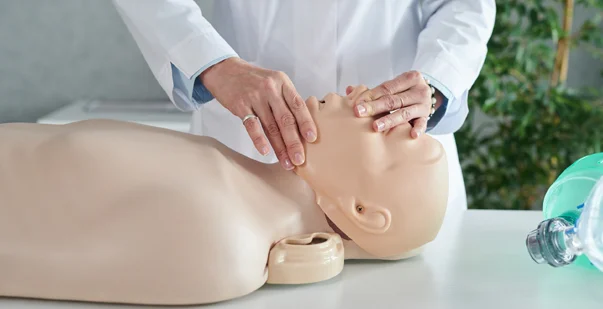Table of content(s)
- Introduction
- What is the importance of new CPR guidelines?
- What are the latest CPR and ECC changes?
- How to access the latest CPR and ECC training resources?
- Conclusion
It is crucial to stay updated with the latest cardiopulmonary resuscitation and emergency cardiovascular care guidelines. Individuals in the healthcare field must refresh their skills and knowledge timely. Current CPR guidelines change regularly to keep up with best practices. In this blog, we will check the new CPR guidelines.
What is the importance of new CPR guidelines?
The updated CPR guidelines are crucial for the following reasons:
- Improved survival rates: High-quality chest compression and early application of a defibrillator have proven to increase survival possibilities during cardiac arrest. It is important to maintain a sufficient compression depth and rate and avoid pauses. This helps with effective blood circulation and increases the chances of survival.
- Better resuscitation techniques: The updated AED protocols provide clear and effective strategies to manage cardiac emergencies. These guidelines help responders perform effective and efficient resuscitation. This is crucial in emergency situations.
- Be prepared: Continuous certification ensures that healthcare professionals are proficient in ECC and CPR guidelines. Constant practice and the use of simulation-based training enable responders to stay prepared. This reduces the likelihood of errors and increases overall confidence.
Read more: CPR Success Rate: How Effective Is CPR?
What are the latest CPR and ECC changes?
Here are the latest latest CPR guidelines to consider:
- Changes in chest compression techniques: The present guidelines point out the quality of CPR, stressing that the depth of compressions should not be less than 2 inches (5 cm) in adults. The suggested ratio is 100–120 compressions per minute to maintain the circulation of blood during instances of cardiac arrest. Interferences made on the compressions should not exceed 10 seconds. This helps enhance the return of venous blood as well as the cardiac output.
- Enhancements in AED usage and protocols: The new guidelines stress the importance of early defibrillation. This can raise the chances of survival. You must use an AED at the earliest. Moreover, rescuers must follow the prompts efficiently. These guidelines suggest that rescuers should not waste any time. Instead, they must continue chest compressions and avoid delays. Additionally, training programs must incorporate realistic AED scenarios to prepare responders for emergencies.
- New recommendations for advanced life support: The latest guidelines have brought about several algorithms. This helps manage cardiac arrests and other cardiovascular emergencies. One of the major changes is the increase in the use of capnography. This helps monitor the efficiency of chest compressions. This also helps in detecting the return of spontaneous circulation. It also recommends the use of medications such as amiodarone and epinephrine. Additionally, it also focuses on post-resuscitation care. This includes neurological evaluation and targeted temperature management.
- Need to continuously train and certify: The changes to the guidelines emphasize the fact that all emergency personnel must receive training on a recurring basis and must prove their competence. The authors have suggested that both healthcare providers and other participants involved in CPR and ECC should practice cardiac emergencies. Additionally, they should also annually update their skills. Training based on simulation is specifically preferred where it involves skills and the decision-making process. The guidelines also detail the importance of feedback devices during training to enhance the compression of the chest as well as the general recovery processes.
How to access the latest CPR and ECC training resources?
Staying updated with CPR and ECC guidelines helps provide effective emergency care. The latest training resources ensure that you and your team are well prepared with the latest techniques and protocols. Here are ways to get these resources, such as the following:
- Online courses: Online courses are convenient ways to stay updated with the latest CPR and ECC guidelines. These are taught through interactive modules, quizzes, and video demonstrations. This helps enhance learning. Reputable organizations offer comprehensive online training programs. You can access them from anywhere. This makes it easy to fit into your schedule.
- In-person training: In-person training sessions offer prompt feedback and hands-on experience. These sessions are valuable and build confidence. In-person training includes realistic simulations. This prepares you for emergencies.
Utilize these methods to equip yourself and your team with the latest knowledge.
Read more: How To Check Your CPR Certification Status?
Conclusion
Stay updated with new CPR guidelines and deliver effective care during emergencies. Incorporate the latest practices and improve patient outcomes. This will help you simply maintain standards and proficiency. Utilize resources, such as online courses, to stay informed. Stay updated with these changes to demonstrate your commitment to safety.
